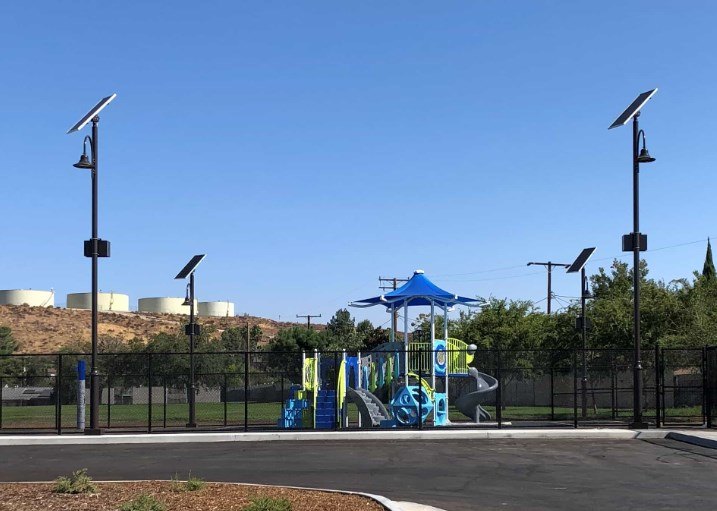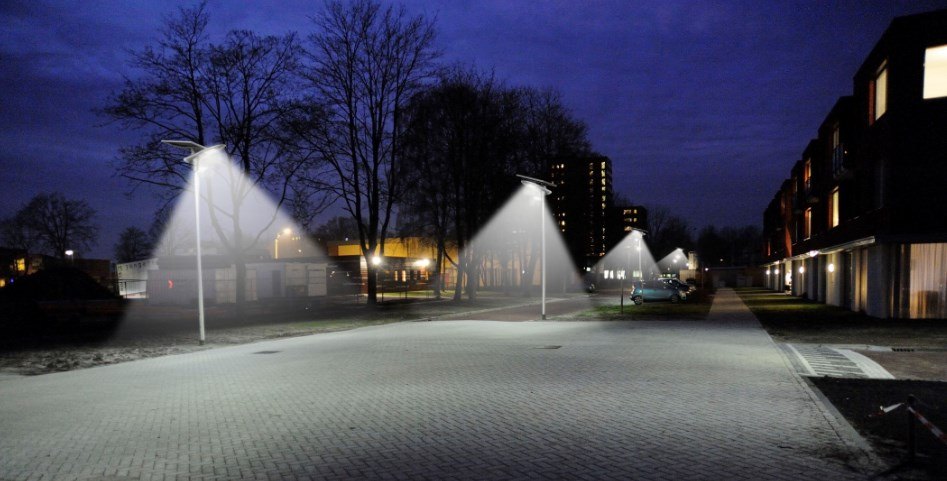How Solar Street Lights Are Transforming Urban AreasPosted by Stephen Shickadance in Inspiring Projects. How Solar Lights Work.Solar street lights have emerged as a powerful solution, offering both energy savings and environmental benefits. By harnessing solar energy, these lights are revolutionizing how cities are illuminated, improving public safety, reducing operational costs, and contributing to environmental sustainability.
Sometimes a community’s effort to boost safety measures for commuters and increase green energy utilities goes hand-in-hand. That’s exactly what happened with two recent Greenshine projects that garnered media attention for their solar pathway light installations. Case Studies: Montrose, CO, and Bakersfield, CARecent projects in Montrose, CO, and Bakersfield, CA showcase the transformative impact of solar lighting in urban areas. In Bakersfield, Greenshine New Energy installed 28 Supera solar street lights along a newly constructed sidewalk and bike path, funded by a grant from the Natural Resources Agency. These solar lights provided enhanced safety and accessibility without the high costs associated with traditional grid-tied systems. The Supera systems are particularly suitable for street lighting, and this was a primary purpose for the Kentucky Street project, in addition to improving visibility along the sidewalk and bike path. This project has become a model for cost-effective green infrastructure in urban settings. In Montrose, CO, Greenshine completed a 9-light solar installation in Rotary Park. The city's public works department was particularly impressed with how easy it was to install the system—no trenching was required—and the flexibility of placing wire-free lights. Based on the success of this project, Montrose is already planning another 9-light installation, further demonstrating the value of solar lighting for urban spaces. These projects highlight the power and efficiency of solar lighting to enhance safety, reduce costs, and contribute to green energy initiatives.
Sustainable Urban LightingSolar street lights contribute significantly to environmental sustainability. Traditional street lights rely on electricity from the grid, often generated from fossil fuels, which adds to greenhouse gas emissions and air pollution. Solar lights, on the other hand, harness renewable energy, reducing the carbon footprint of urban lighting systems. By eliminating the need for electricity from the grid, solar street lights help cities transition toward sustainable infrastructure and reduce their reliance on non-renewable energy sources. Lower Energy Costs for MunicipalitiesThe cost of powering traditional street lights can be a financial burden for municipalities. Solar street lights offer a solution by reducing energy consumption and eliminating the need for electricity from the grid. In addition to cutting energy costs, solar street lights require minimal maintenance, with long-lasting LED bulbs and batteries that can operate for several years without needing replacement. This reduced maintenance, combined with the energy savings, allows municipalities to invest in other infrastructure projects, further increasing the cost-effectiveness of solar lighting systems. Enhancing Public SafetySolar street lights are crucial in improving public safety in urban areas. Well-lit streets, parks, and public spaces reduce the risk of accidents and crime. The independent operation of solar lights, even during power outages, ensures that critical areas remain illuminated during emergencies or natural disasters. As seen in the Montrose and Bakersfield projects, solar street lights provide a reliable and effective solution for lighting pathways, parks, and public spaces, making them safer for pedestrians and commuters. Flexibility and Easy InstallationUnlike conventional lighting systems that require extensive trenching and wiring, solar street lights are easy to install and operate as stand-alone systems. This flexibility allows for the illumination of previously hard-to-reach areas without the need for costly infrastructure upgrades. Solar lights can be installed in parks, walkways, parking lots, and developing neighborhoods, making them a practical and scalable solution for cities looking to expand their lighting infrastructure while keeping costs low. Minimizing Light PollutionLight pollution is a concern in urban areas, affecting ecosystems and the visibility of the night sky. Solar street lights equipped with LED technology are designed to minimize light pollution by focusing illumination on the ground, rather than dispersing it broadly. By reducing unnecessary light pollution, cities can create healthier environments for both people and wildlife while preserving the natural beauty of their surroundings. Resilience in Extreme ConditionsSolar street lights are designed to withstand harsh weather conditions, making them ideal for a variety of urban environments. Whether in extreme heat, cold, or storms, solar lighting systems are engineered for durability and reliability. Because they operate independently of the power grid, solar street lights remain functional during power outages, ensuring that critical areas stay lit even in emergencies. ConclusionSolar street lights are revolutionizing urban areas by offering an eco-friendly, cost-effective, and flexible lighting solution. As demonstrated in Montrose, CO, and Bakersfield, CA, these lights enhance public safety, reduce energy costs, and contribute to green energy goals. The integration of solar street lights with smart technology and their resilience in extreme conditions make them a critical component of the modern urban landscape. As more cities adopt solar lighting, urban areas are becoming more sustainable, energy-efficient, and safe, paving the way for a brighter, greener future.
Inspiring Projects
How Solar Lights Work
|
ArchivesNo Archives Categories
Want More Info? |
LATEST NEWS & ARTICLES


